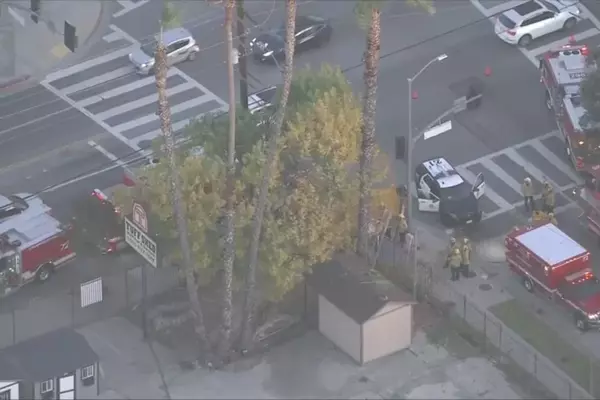When her daughter started suffering severe skin reactions, Sophie Reynolds tried everything to try to ease the symptoms and find the source.
Ms Reynolds says the sores on her 10-year-old extended across her face and behind her ears.
Simultaneously, the family had been noticing plumes of dust blow onto their property from the direction of the Cadia gold mine near Orange, New South Wales.
When the family had the drinking water from the rainwater tank tested high levels of lead were found.
"As soon as we got those results, I said 'I am not touching that water,'" Ms Reynolds said.
She started buying bottled water and travelled to Orange to shower and do laundry.
"Two days after I started washing [my daughter's] face with the town water, the redness went," Ms Reynolds said.
"Some of the sores were so deep, it took a week and a half [to heal]."
The Reynoldses are among a group of residents living near Cadia Valley Operations (CVO) who have been concerned about dust lifting off the site since 2018.
A section of wall on one of CVO's tailings storages facility, which holds mining by-products, sustained damage in the same year.
In 2021 the mine's expansion plans were approved and it vowed to make improvements to address concerns about dust.
Dozens of families have now had their blood and rainwater tested and the results show high levels of heavy metals such as lead, nickel and selenium.
'It's water vapour'
On Monday, the Environment Protection Authority (EPA) announced it has launched an investigation into the mine.
The EPA has issued a draft pollution prevention notice and a draft licence variation regarding the emission of dust and other pollutants from the site.
Chief executive Tony Chappel said he had also written to the NSW chief health officer asking for a full health-risk analysis to determine whether the mine dust was impacting the community's health.
"Industry has strict obligations to meet clean air standards and currently Cadia appears to be falling well short of our expectations," Mr Chappel said.
"Last week the EPA received new evidence from the community to suggest actions by the mine to reduce dust pollution have not been effective."
The notices require the mine to retest a vent and extend an ambient air sampling network.
The EPA has given CVO until Tuesday to respond to the draft notices.
In a statement, Cadia's acting general manager, Mick Dewar, said the company took seriously the concerns raised by members of the community.
"Nothing is more important than people's health and safety, and we remain firmly committed to making sure that we meet all of our statutory obligations and do it in a way that is aligned with our values," Mr Dewar said.
He said the mine had already started a human health risk assessment, a drinking water sampling program, a lead testing program and 12-month dust fingerprinting program through the Australian Nuclear Science and Technology Organisation.
Mr Reynolds said he was previously assured by CVO that there was no dust pollution.
"The constant comment back was, 'It's water vapour, Bruce,'" he said.
The Reynolds family's blood tests showed high levels of the heavy metal selenium.
"I am so worried about the future for my daughter and for all the children around here," Ms Reynolds said.
"All the families — you've got babies, you've got pregnant women.
"We can't stop breathing — we know it's landing on our roof, because it's in the air."
'It's horrendous'
The ABC has seen blood test results from several other residents who live near CVO.
The most common elevated heavy metals are selenium and nickel.
Jann Harries, whose property is one of the closest to CVO, says the community's relationship with the mine has deteriorated in recent years because of the dust.
"[You can] taste, smell and see the dust," she said.
"It comes over the valley — you can see it coming across the hill behind us.
"Windows are open and we get a dust cover on the benches.
"It's horrendous."
Lead has also been found in Ms Harries's water tank and her blood tests showed elevated levels of selenium.
She is still waiting for more results from additional tests.
"Currently I'm OK, I feel OK," Ms Harries said.
"Yes, I've got some lead and some selenium, but I feel that I'm not at risk at this point of time."







